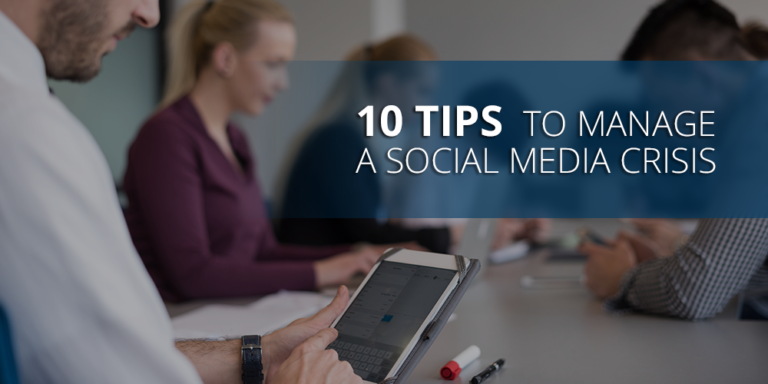Truth be told, social media can make and break a brand. A single post, whether it’s positive or negative, can go viral in just a few hours, even minutes, and launch your brand or business into the spotlight.
Social media adds new layers of both opportunities and risks to companies—proving that it should be included in the company’s crisis communication management. This is where a crisis communication planner comes into play. He or she is in charge of the creation and implementation of a streamlined crisis communication plan that will inform teams how to manage a social media crisis effectively.
An effective crisis communication management should not be limited to the crisis that started on social media. It should also include solutions to handle a crisis that began offline, but exploded online.
Here are ten tips to create your tailor-fit crisis communication plan to pacify a social media fiasco successfully.
Tip #1: Invest in a social media listening tool.
Convince & Convert president and author, Jay Baer, advised that investing in a social media listening tool is part of a pre-crisis management.
Considering that Facebook alone has 1,590 million active users in 2015, there really is so much going on in the entire social media landscape. Thus, it’s impossible to monitor what people are saying about your brand or product/service without the aid of a listening software.
Having one will help you nip the potential social media crisis in the bud and pacify any rising numbers of angry customers before it goes viral. Of course, you have to evaluate different social media tools available in the market based on the number of your social media personnel, interaction with your audience, and number of profiles you manage among other factors.
Tip #2: Ride the waves using humility.
Riding the waves of a potential social media crisis—and takedown—needs a cool head and zero egos. Baer added that acknowledging a crisis is the first thing that you should do when faced with a whole lot of negative comments and attacks online.
Tip #3: Know where to aim the water, pronto!
In the case of fire, aim the water to the area where the fire first started. For instance, if the crisis broke out on Twitter, acknowledge the crisis there first, added Baer.
Once you’ve covered the situation on Twitter, check the crisis scene in Facebook, Instagram, and other social media channels, then issue the same acknowledgement and apology.
Some crisis communication planner might think that creating a professionally-done “Sorry” video and posting it online will do the trick and pacify irate online customers—considering that the video was published on time and in the right channel. However, keeping mum about the crisis for days will just fuel more online hate.
Tip #4: Monitor, monitor, monitor.
Just because you’ve already issued an official apology doesn’t mean it’s over. In fact, it makes more sense to follow the social media crisis all the more.
Monitoring how a social media crisis develops will help you in efficiently handling it, advised Sofie De Beule in her blog on Social Media Examiner.
Segregating and labeling the incoming communications—whether from social media or other sources—will help ensure that messages get a proper response.
Issuing a rapid public response directly to the online customers will contribute to pacifying the situation. This is why a crisis communication planner should have a template of public statements that can easily be edited to suit any social media situation.
Tip #5: To delete or not to delete?
A single post can take down an empire is particularly the case in today’s digital world. One single Facebook post can ruin not just an ongoing marketing campaign, but even the brand’s and the company’s carefully-crafted image in the last few decades.
Some people may think that deleting the post will solve the problem. But, it doesn’t. Consider the fact that many people probably took screenshots of the original post, and if it has gone viral, accept the fact that it will haunt you for eternity.
Michael Patterson from Social Media Examiner advised that determining whether or not to delete the original post should be the first step. Then again, keep in mind that this will not solve the problem.
Some online users can also attack you for deleting the negative comments posted online. This is one platform where you can’t just quickly sweep bad comments and bad publicity under the rug. Delete one comment and 100 more can replace it just as easily.
Tip #6: Don’t go to war unprepared.
Think of social media crisis as a war zone, you can’t go to war without a strategy in place. The social media provided people a channel where anonymity can produce the harshest comments and takedown. When you do fail in going to war without a strategy, irate customers can smell your fragility and tear you apart.
Heather Smith added that lack of strategy is one of social media’s top 15 mistakes to avoid. A plan doesn’t include just the official press release you will issue and the apology you will post.
A social media crisis strategy includes measurable goals that you need to accomplish as you ride the waves. It also includes a content calendar tweaked to over the current crisis.
Tip #7: Hashtags could be your lifeboats.
Smith added that using hashtags in dealing with social media crisis can help double the engagement rates of your releases. Creating a specific hashtag for an online crisis can definitely contribute to reaching more people and help others get you.
Monitoring these hashtags is easy using a social media listening tool. It’s like the digital equivalent of casting a net over your online audience so you can catch what they are saying.
Tip #8: Consistency is the key.
In a social media crisis, having a consistent voice helps. However, bear in mind that the voice we’re talking about here is not your own but the brand’s or the business’.
“A business’ Twitter account should be used for business, not personal anecdotes. While unique, funny and chatty messages can make a Twitter account seem more ‘human,’ getting into arguments, insulting other brands or using it to advance the unrelated interests of executives pushes the platform off-message and can create backlash,” added Smith.
The best practice is to find the middle ground between the brand’s voice and your own. This will ensure that your social media image is not stiff, but relatable.
Tip #9: Don’t ignore your followers.
If you’re not interacting with your online audience, you’re in the wrong job. Smith added that businesses should have a strategy in place that will outline the rules to respond to comments on social media. This approach will help social media specialists determine if a post or a comment merits a response from the business.
Tip #10: When in crisis, pause all scheduled posts.
Social media manager, Charli Day, advised to hold off all scheduled posts when in the middle of a social media crisis.
For instance, if you have a scheduled post about the wonders of mineral makeup but you’re right in the middle of a skin allergy fiasco gone viral, you will just end up throwing more gasoline on the fire if that scheduled post goes through.
Until you have sufficiently handled the crisis, hold off all future posts. When you resume releasing content online, remove or tweak the ones that might bring up the recently cooled down social crisis back in the spotlight.
In this ever-evolving social media age, “think before you click” is definitely a must not only for businesses but for individuals as well. But, if things get out of hand, remember these tips to ensure that your company maintains a positive branding across your target market.


